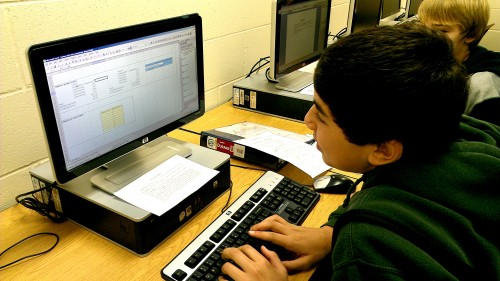 After days of work in the field and lab collecting data on their BeSt biofuel plots, four classes at Lawton Community Schools – Ms. Angle’s 8th-graders and Ms. Visich’s Environmental Science class – finally got to enjoy the fruits of their labor. As any scientist knows, no fruit is more satisfying than juicy, crunchable data.
After days of work in the field and lab collecting data on their BeSt biofuel plots, four classes at Lawton Community Schools – Ms. Angle’s 8th-graders and Ms. Visich’s Environmental Science class – finally got to enjoy the fruits of their labor. As any scientist knows, no fruit is more satisfying than juicy, crunchable data.
We started this adventure by looking at what kinds of data we had. This included the planting, fertilization, and harvesting treatments as well as the data we collected, from plant and insect biodiversity to soil characteristics. Each student made his or her own hypothesis about why a pair of variables might be related. Does fertilization increase insect abundance? Does moisture increase plant biomass production? Only one way to find out…
The students plotted their data by hand, then ventured into the computer lab to produce graphs and analyze the data with Excel. Then they searched for published papers that supported or refuted their findings. Finally, they presented their conclusions in class. Among other findings, it turns out fertilization doesn’t affect insects, but moister plots did produce more plant matter. Using the data across years and schools will make this even more exciting!
By GK-12 Fellow Anne Royer, 2013
